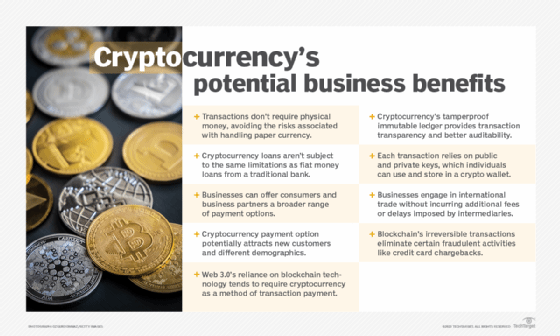How to Securely Order Cryptocurrencies: A Step-by-Step Guide for Beginners
How to Securely Order Cryptocurrencies: A Step-by-Step Guide for Beginners
Blog Article
The Future of Cryptocurrencies: Trends to See in the Coming Years
As we look ahead, the landscape of cryptocurrencies is undertaking extensive modifications influenced by several essential trends. The introduction of Reserve bank Digital Currencies (CBDCs) stands to redefine the integration of electronic assets within traditional monetary systems, while enhanced regulative scrutiny may shape the functional landscape for cryptocurrencies. In addition, the development of decentralized money (DeFi) and the expanding relevance of non-fungible tokens (NFTs) promise to alter understandings of ownership and valuation in an electronic economic climate. These advancements raise essential inquiries about the future trajectory of cryptocurrencies and their function in our financial community.
Increase of Reserve Bank Digital Currencies
The development of Reserve bank Digital Currencies (CBDCs) represents a considerable change in the monetary landscape as governments discover digital options to standard fiat money. These state-backed electronic money aim to boost the efficiency of settlement systems, advertise monetary incorporation, and provide a safe and secure option to personal cryptocurrencies. Unlike decentralized electronic money, CBDCs run under the auspices of reserve banks, ensuring governing oversight and security.
A number of nations are actively piloting or investigating CBDCs, with remarkable instances consisting of China's digital yuan and the European Reserve bank's digital euro effort. These initiatives highlight an expanding acknowledgment of the potential advantages of digital money, such as faster deal rates and minimized costs connected with cross-border payments. In addition, CBDCs could act as a device to battle illicit activities by giving greater openness in purchases.
As the fostering of CBDCs progresses, they might reshape customer habits and influence worldwide monetary characteristics. The transition to a digital currency framework offers difficulties, including technical facilities, cybersecurity issues, and public count on. The increase of CBDCs symbolizes a zero hour that could redefine the role of cash in a progressively electronic economy, warranting close observation by market stakeholders and policymakers alike.
Increased Regulative Examination

Countries worldwide are taking different techniques, from outright bans to governing sandboxes that permit technology while ensuring conformity. The European Union, for example, is moving towards detailed legislation with the Markets in copyright-Assets Guideline (MiCA), focused on developing a unified method across participant states. In the United States, companies like the SEC and CFTC are significantly energetic in releasing guidelines and enforcement activities.
Firms running in the copyright room may encounter stricter conformity requirements, which could lead to raised operational expenses. Eventually, the equilibrium between technology and law will shape the future of cryptocurrencies.
Advancement of DeFi Operatings Systems
Decentralized Finance (DeFi) systems have actually undertaken significant makeover since their inception, improving the conventional financial landscape - order cryptocurrencies. These systems mainly concentrated on straightforward features such as loaning and borrowing, facilitated by clever contracts on blockchain networks. The evolution of DeFi has actually increased to incorporate a wide range of economic services, consisting of derivatives trading, return farming, and automated market-making.
One of the most remarkable advancements is the emergence of Layer 2 options, which boost scalability and minimize transaction prices, making DeFi a lot more easily accessible to a wider target market. In addition, cross-chain interoperability has come to be an important emphasis, permitting users to transfer possessions perfectly across various blockchain networks. This advancement fosters greater liquidity and user interaction.
In addition, the assimilation of innovative administration versions has encouraged communities to join decision-making procedures, advertising sustainability and innovation within the ecological community. As DeFi continues to develop, we can anticipate further enhancements in customer experience through boosted interfaces and safety and security steps, attending to problems that have previously impeded mainstream adoption. Generally, the trajectory of DeFi systems points towards a more comprehensive and efficient economic future, providing options to standard banking systems.
Combination of NFTs in Finance
Amidst the rapid advancement of the economic landscape, the integration of Non-Fungible Tokens (NFTs) has actually become a transformative force. Typically related to electronic art and collectibles, NFTs are currently finding applications in various monetary sectors, introducing cutting-edge ways to stand for possession and value.
One significant location of assimilation remains in property, where NFTs can simplify residential or commercial property deals. By tokenizing property assets, buyers can appreciate fractional ownership, lowering entry barriers and raising liquidity. order cryptocurrencies. Furthermore, NFTs can make sure transparent and immutable records of possession, helpful site enhancing count on real estate dealings
In the world of finance, NFTs are also being used for decentralized finance (DeFi) applications, making it possible for their website collateralization of assets. By utilizing NFTs as collateral, borrowers can access lendings while maintaining ownership of their electronic properties. This performance enhances the ease of access of financial services and promotes an extra inclusive monetary ecological community.
In addition, the combination of NFTs into conventional finance might reinvent the way copyright legal rights are taken care of, offering designers with new revenue streams through smart contracts. In general, the assimilation of NFTs in financing symbolizes a change in the direction of even more innovative, effective, and clear economic services, leading the way for future improvements.
Improvements in Blockchain Innovation

One considerable fad is the introduction of Layer 2 services, made to improve scalability and transaction speeds, thereby attending to the limitations of main blockchain networks. These services make it possible for faster handling of deals, lowering costs and increasing effectiveness, which is important for mass adoption.
Furthermore, interoperability in between different blockchain networks is obtaining grip. This development permits seamless data exchange and possession transfers throughout diverse systems, advertising a more linked and reliable ecosystem. Protocols that help with cross-chain communication are necessary for promoting partnership amongst decentralized applications (copyright) and enhancing user experiences.
In addition, look at this site innovations in agreement mechanisms, such as proof-of-stake and handed over proof-of-stake, are adding to more energy-efficient and secure blockchain procedures. These developments not just deal with ecological concerns yet additionally boost network strength.
As blockchain technology remains to develop, its assimilation right into numerous markets, including money, supply chain, and healthcare, will certainly redefine typical systems, leading the way for a decentralized future.
Final Thought
The appearance of Central Financial institution Digital Currencies will certainly boost the assimilation of electronic possessions right into standard monetary systems. Additionally, the continuous advancement of decentralized financing systems and blockchain innovation, alongside the assimilation of non-fungible tokens, will redefine possession and financial transactions, cultivating boosted adoption and technology within the market.
Report this page